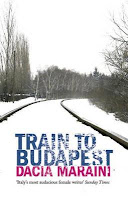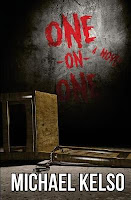Train To Budapest by Dacia Maraini

Author : Dacia Maraini
Title : Train To Budapest
Published : 01/06/10
Pages : 342
Genre : Historical Fiction
Publisher : Arcadia Books
1956: Amara, a young Italian journalist, is sent to report on the growing political divide between East and West in post-war central Europe. She also has a more personal mission: to find out what happened to Emanuele, her soul mate from before the war when both were children in Florence. Emanuele and his family were Jews transported by the Nazis from wartime Vienna, but not before he had sent Amara a long series of letters she still carries with her. Her quest now takes her on long train journeys. She visits the Holocaust museum at Auschwitz, and Budapest, where she is caught up in the tumultuous events of the October rising against the Soviet Union.
Sometimes you come across a book that grabs you from the get-go. While dealing with a topic I have read a lot about over the past few years it also moves into the world post world war two. It manages to capture a world most have never really given much thought to. The effects of the Warsaw pact had long reaching effects and gave birth to the cold war. But for some behind the iron curtain, It was a choice forced upon their country and one the did not wish to stand by. The author manages to capture these uncertain times in a very human way. Showing us the people on the ground and how their struggles came from the heart and a wish for a better life.
Within this book not only do we see the struggles of the time, she also shows that the traumas caused by the war were still as fresh a decade after the tragic event. It is through the letters Emanuele sent Amara that we learn of there life before the war and up to the point when Emanuele could no longer send them. There is something about the letters that connects us to the story in a new way. I think in the world we now live in letters are becoming a thing of the past. Before people would put there everything into sending a message out to people they cared for. It was a life linen for those they could not be with and a way to still feel connected. In the cases of Amara, it is also a form of clues as she traces Emanuele path through the world of the Nazi occupation.
This book for me carries's another worldly quality, as she meanders across Europe in her search for not only what befell her childhood love but also in the search for the story her job has tasked her with. Along the way, she meets across a section of the people who now inhabit these lands. It gives the reader insight into a place that carried deep wounds, and how they fought to try and heal them. The way the book is written feels almost like it's floating, as we move from the present to the past interconnected by the people she meets along the way. They serve to give light to the reader's lack of knowledge and expand the story beyond our heroine. It ends up forming a book, unlike the ones that have come before on the subject. While I don't think it will ever capture the true horrors of what took place, for me it managed to encompass an interesting tale with historical facts.
Between the letters and the first person narrative, it allowed me to become immersed in the story and I was left feeling glad to have read the book.


Comments
Post a Comment